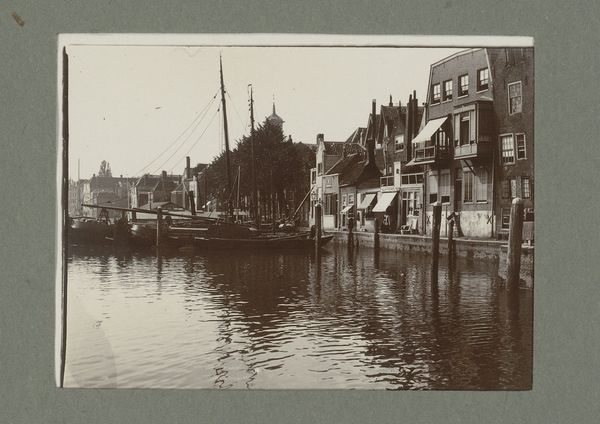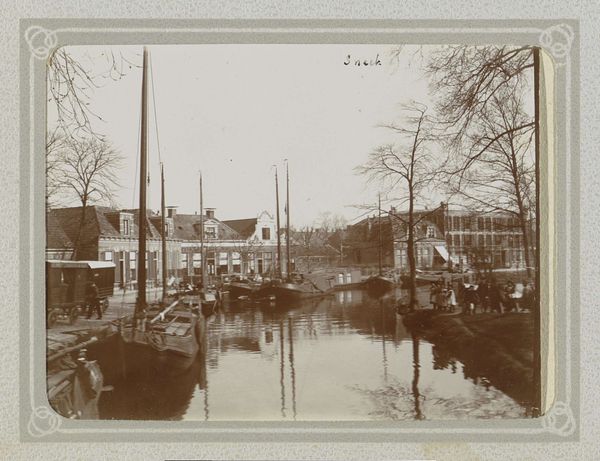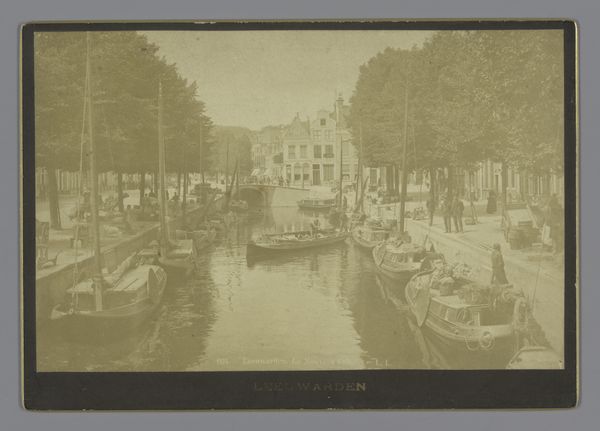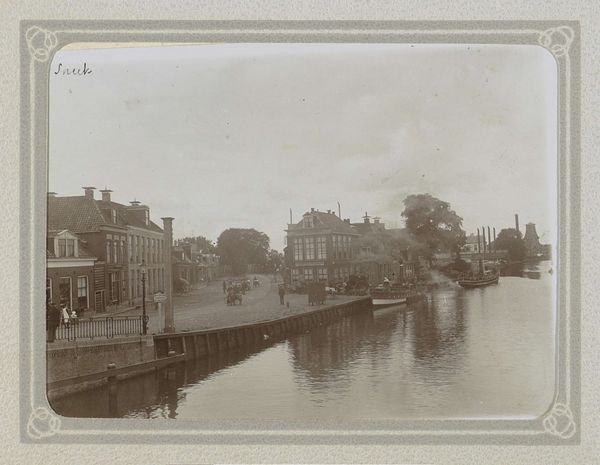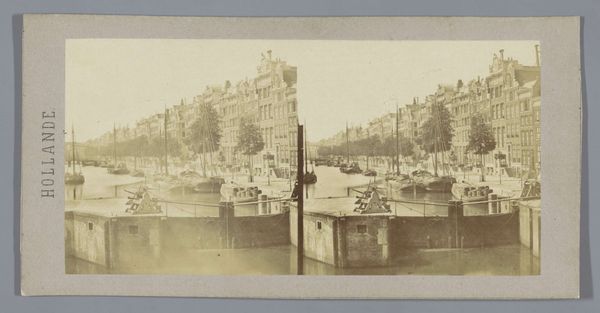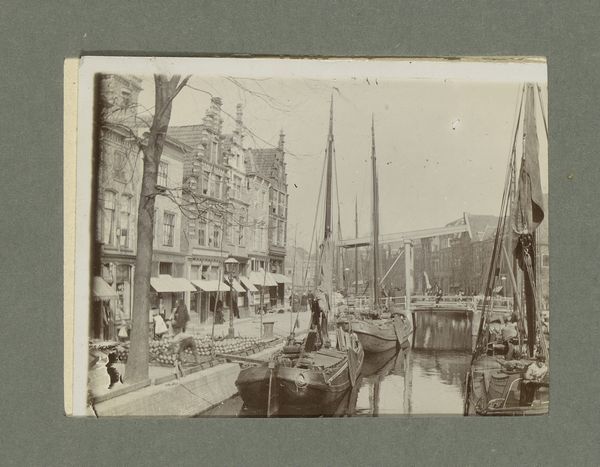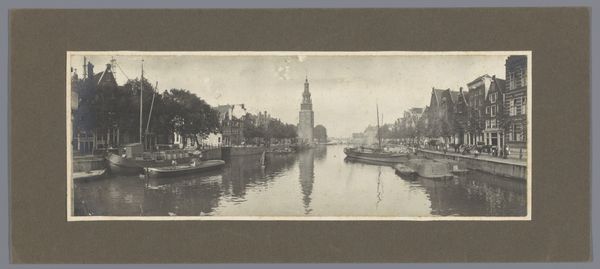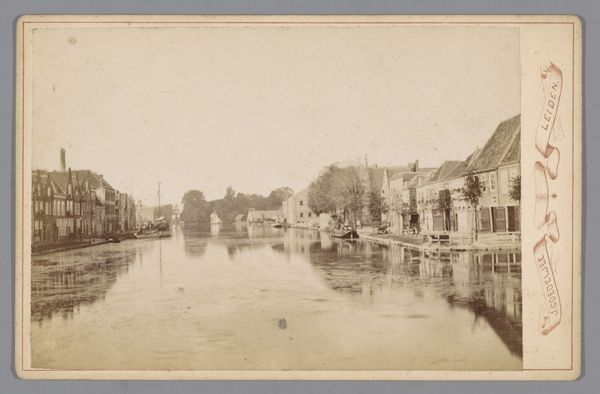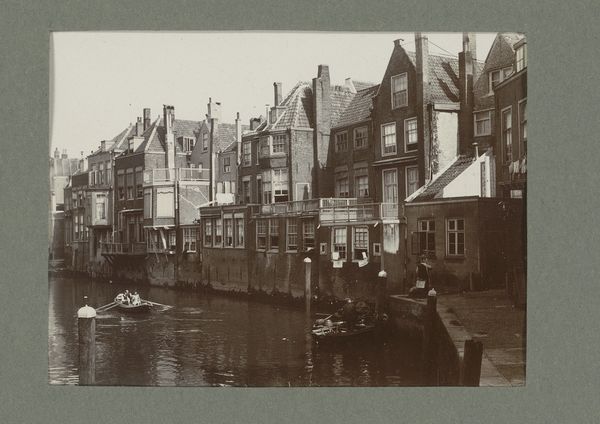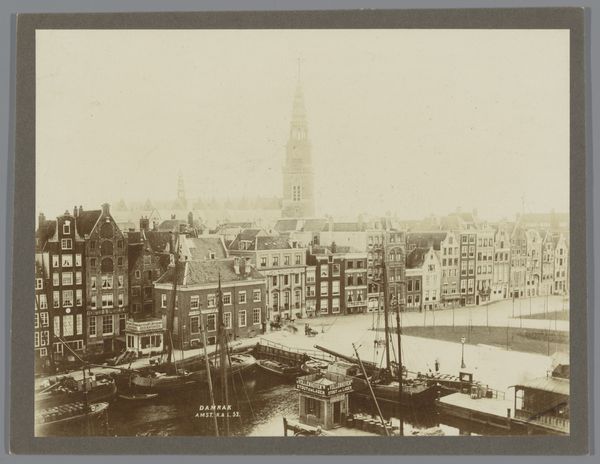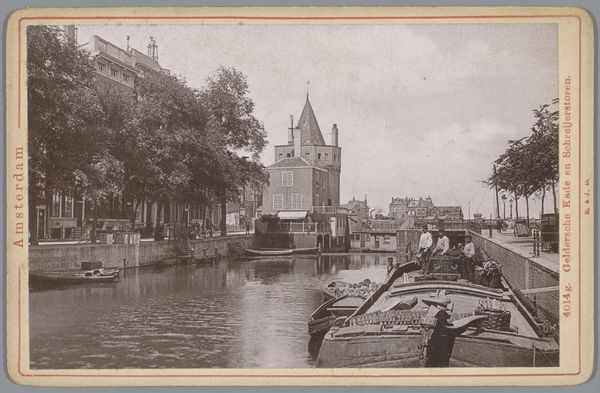
photography
#
dutch-golden-age
#
street-photography
#
photography
#
cityscape
#
realism
Dimensions: height 81 mm, width 110 mm
Copyright: Rijks Museum: Open Domain
Curator: This captivating photograph, taken by Folkert Idzes de Jong around 1905-1907, offers a glimpse into a bustling canal in Leeuwarden, Netherlands. It is titled "Boten en omstanders op een gracht in Leeuwarden." Editor: My initial impression is the incredible texture captured here! You can almost feel the grit of the stone docks, the worn wood of the boats, and the coarse cloth of the sacks lining the canal. What’s striking to me is the sheer density of labor represented. Curator: Indeed! The image acts as a document of daily life and labor in the early 20th century, capturing social interactions as much as maritime transport. Note how the composition centres on working-class people. Considering Leeuwarden's social strata at the time enriches our view. Editor: Absolutely. And speaking of transport, look at the various types of boats, and the implied labour involved in their construction and upkeep. We see evidence of industry right there along the canal’s edge – what is being moved? Who benefits? How is wealth extracted and exchanged? It gives an invaluable insight into their society's physical means of production. Curator: Exactly, these details help to read the photo against a broader social-political narrative. The photographic technology itself speaks to wider cultural movements too, granting new ways of seeing everyday realities of early 20th-century life. Consider also the gender dynamics within this industrial landscape, with men appearing dominant within the canal work compared to the shopping women that can be seen in the storefronts to the side of the canal. Editor: That focus on early photographic methods as industrial practices helps show a historical transition in manufacturing visual artifacts. De Jong's work highlights this unique intersection. Curator: Agreed. This single image holds multiple narratives on technological development, material realities and societal roles—offering profound insight for both then and now. Editor: Looking again, the commitment to documentary aesthetics gives it authenticity and enduring value. The convergence of production, the activity, the people...a striking historical document.
Comments
No comments
Be the first to comment and join the conversation on the ultimate creative platform.

